Get the weekly SPARTANAT newsletter.
Your bonus: the free E-Book from SPARTANAT.
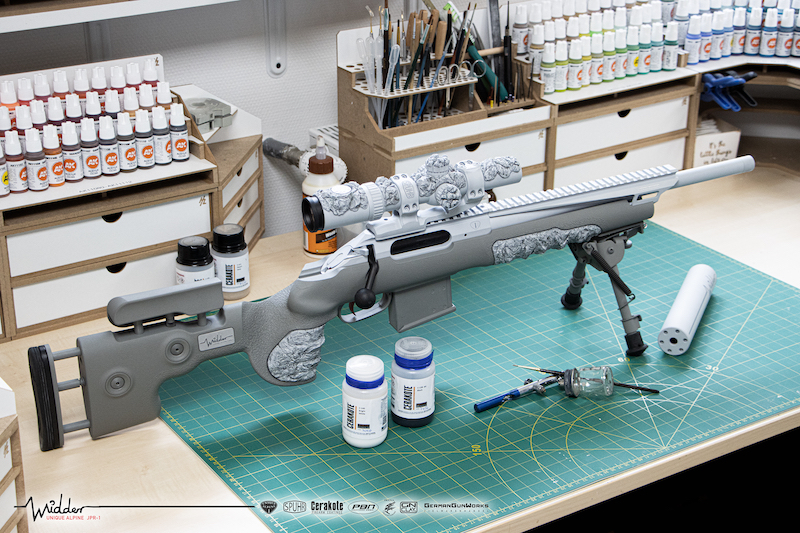
Would you like something different for a change? The GermanGunWorks Aries project
GermanGunWorks introduces the unique project "Widder" featuring innovative firearm modifications using modern materials. Partners like Unique Alpine, Spuhr, Cerakote, and more worked together to create a visually striking yet functional weapon.
Anyone who knows GermanGunWorks knows that the gun tuner likes to approach modifications differently than what is commonly known. Of course, the majority of the Swabian modifications are in the classic range, but there are also some that stand out. Like in this case, the project "Widder".
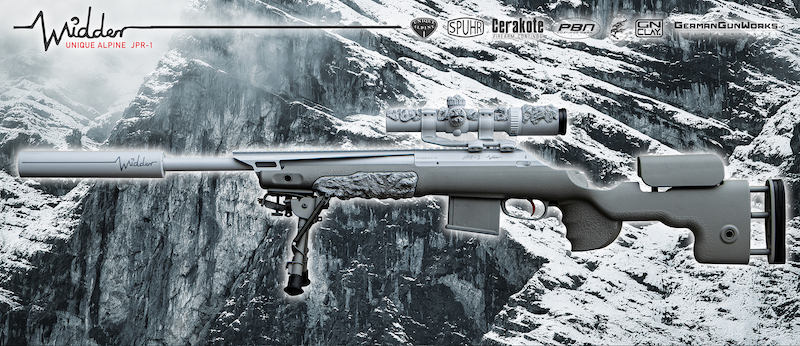
Presumably, this project is the first large caliber firearm whose surface was not engraved or milled, but modeled with the most modern materials. For many, this new method may seem strange at first and certainly polarize visually, but as we will later find out, the know-how behind it is impressive.
The project partners
This project was realized by Unique Alpine, Spuhr, Cerakote, GnClay, PBN Coatings, Sierra Weapon Coating, Harris, and GermanGunWorks. All well-known names in their industry and specialists in their field. Each of them was able to contribute their strengths to the project.
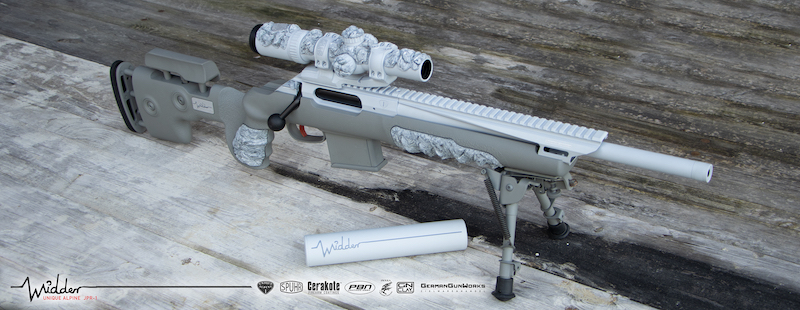
The foundation - JPR-1 Nordland Scout
The base weapon JPR-1 Nordland Scout from the Erding company Unique Alpine AG is a hybrid of a weapon for official and hunting/sporting use. The weapon already has very good characteristics. With a total length of only 91cm (without suppressor) and a barrel length of 16.5" (419mm), an adjustable pressure point trigger (900-2500g / preference path / trigger stop / rest overlap) as well as an extremely ergonomic GRS stock in combination with high precision and enough Picatinny length (STANAG 4694) for accessories.
The weapon is handy, maneuverable, and equipped with a heavy match barrel and 5/8-24 UNEF muzzle thread. Like here in .308 Win caliber, it is a reliable precision tool for duty as well as for hunting or sport shooting. All this at a base price of € 2298.
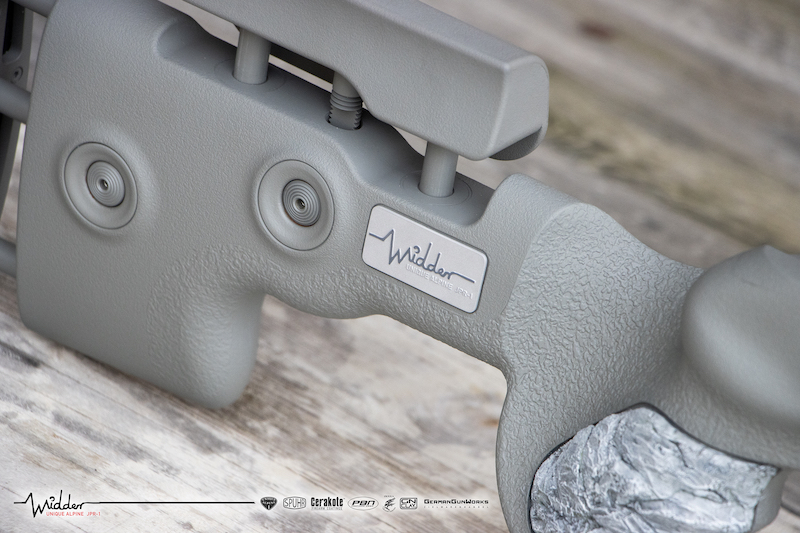
Additionally, the JPR-1 is very compatible with ammunition, which also brings great advantages. With the 1 MOA precision guarantee, each weapon is delivered with a shot pattern proof. Secretly, the manufacturer goes even further, because even if a weapon has a 1/2 MOA deviation, they already start looking for errors! The best results were achieved with the 165grn Hornady SST, RWS Hit, and Target Elite Plus projectiles.
This precision does not come by chance, as Unique Alpine manufactures the weapon according to official standards, since these models are regularly used by, for example, police units. It is officially available in .243 Win, 6.5CM, 6.5x47 Lapua, and .308 Win calibers. Two more calibers are also said to be orderable - 6mm Creedmore and 450 Bushmaster.
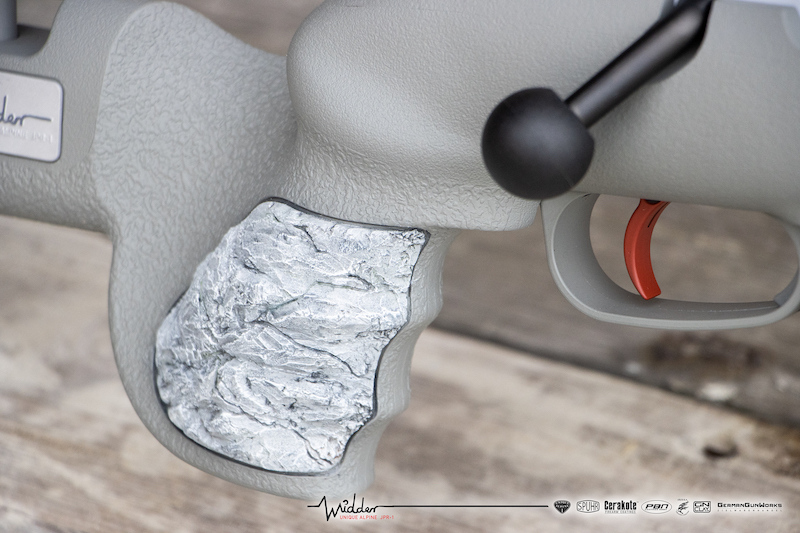
We appreciate that the system itself is very Mauser-like. If you want to develop a good hunting and duty bolt action rifle, you cannot ignore the ideals of the Mauser system. Therefore, the trigger can be exchanged for other Mauser 98 triggers, but we do not recommend it, as an excellent trigger is already installed. The firing pin has a firing pin safety and it has a three-lug bolt.

The bolt was designed in such a way that it functions with zero primary extraction clearance. It opens 7/10 before and closes 7/10 before, which strongly counteracts case clamping and allows for the cleanest cycling. The bolt or its function significantly contributes to the high precision of the weapon.
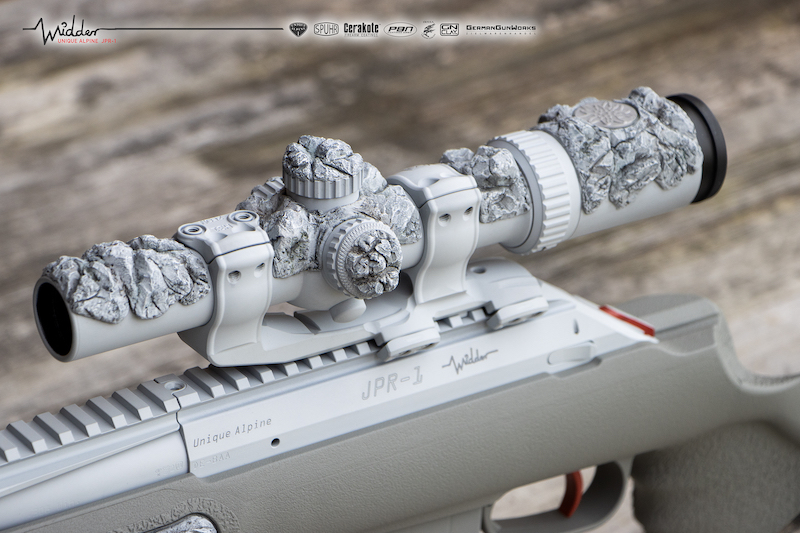
The ejector is firmly installed in the housing and also has a great feature. If you repeat quickly, it throws the casings out with corresponding force. However, if you repeat slowly, it practically hands you the casing from the ejection window.
In all other areas, no corners were cut. The barrel is gas nitrided, the system housing, bolt, firing pin, and firing pin flag are DLC-coated. Here, too, there is a maximum of processing quality, which also brings with it emergency running properties - should oil be lacking. GGW made sure not to remove the DLC coating during repainting, so the weapon now has a double protection. The magazines are AICS compatible and therefore also fit in any Tikka CTR/UPR etc..
The JSD-1 hunting suppressor is also from Unique Alpine and extremely robust and durable. With an outer stainless steel housing and titanium internals, it provides a damping effect of around 25dB.
The overall system JPR-1 is something special, which may not be immediately apparent without this background knowledge. Your money is more than worth the JPR-1 - a perfect base for the project.
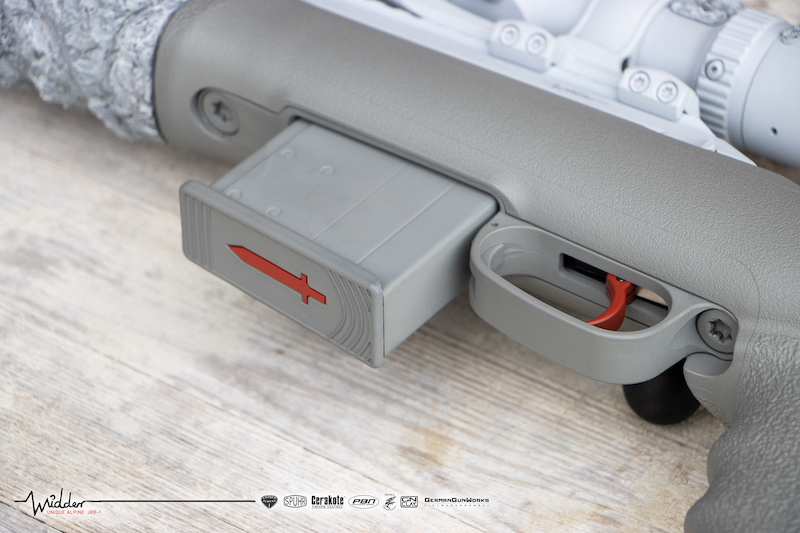
The Objective
The weapon should, apart from the repaint, laser engravings, and modeling, remain within a financially manageable framework. For this reason, GGW relied on tried and tested components such as the use of a Harris S-BRM bipod, a hunting Spuhr mount, and a 1-4x Burris varmint scope. Overall, these are components that do an excellent job without drifting into overly expensive spheres. In short, unlike many of the tuner's previous projects, this weapon can be afforded by someone with a normal income.
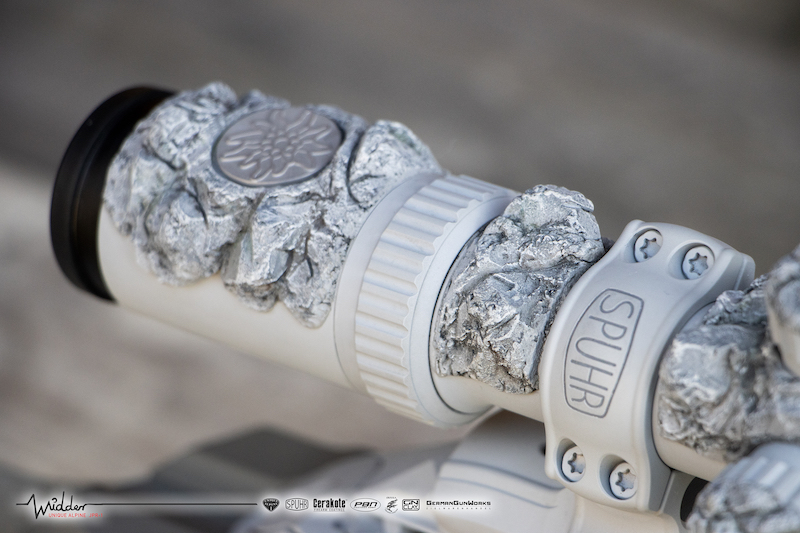
The Spuhr mount (SCP-3022) is from the Hunting Series of the Swedish manufacturer and was deliberately chosen as a cantilever (offset block mount) based on the eye relief chosen for the scope in combination with the weapon. Depending on the shooter's head position, a regular mount would sometimes have to be placed on the picatinny rail of the handguard, which is to be prevented. With this choice, all options are kept open and maximum flexibility is offered. The existing ISMS interface on the front ring could be used to attach a small red dot sight.
Through its long-standing cooperation with Spuhr, GermanGunWorks not only presents a good image in its projects, at least in Germany, when looking for the best prices for Spuhr mounts, one should check out the GermanGunWorks shop.
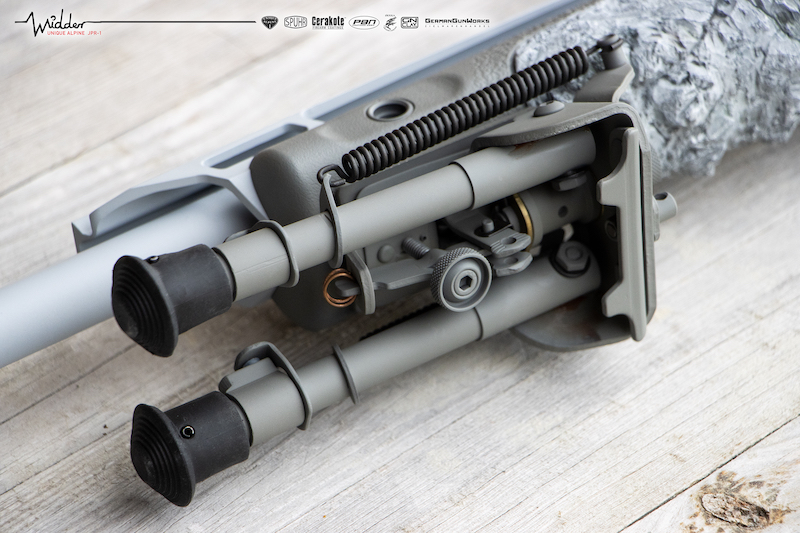
With the Harris bipod (S-BRM), it's no different. Of course, there are now more modern and "fancier" solutions, but the American bipods with cult status are still the most reliable and robust systems on the market. So, if you get an original and not one of the many copies of the bipod, you have acquired a bipod for eternity.
The Painting
Once again, PBN Coatings was on board, as they are the general importer for Cerakote in Germany. For years, GGW has relied on this cooperation because Cerakote paint still has no serious competition in terms of quality, properties, and handling.
The colors 213 Battleship Grey and 214 Bull Shark Grey from the H-Series of the manufacturer were selected. The H-Series is a two-component paint that is baked in the oven after application.
With years of experience in handling the paints, it must be said that Cerakote cannot be painted by just anyone. A proper approach in the areas of surface treatment, degreasing, painting, and curing is crucial to achieve a perfect result and bring out all the positive properties of the ceramic paint.
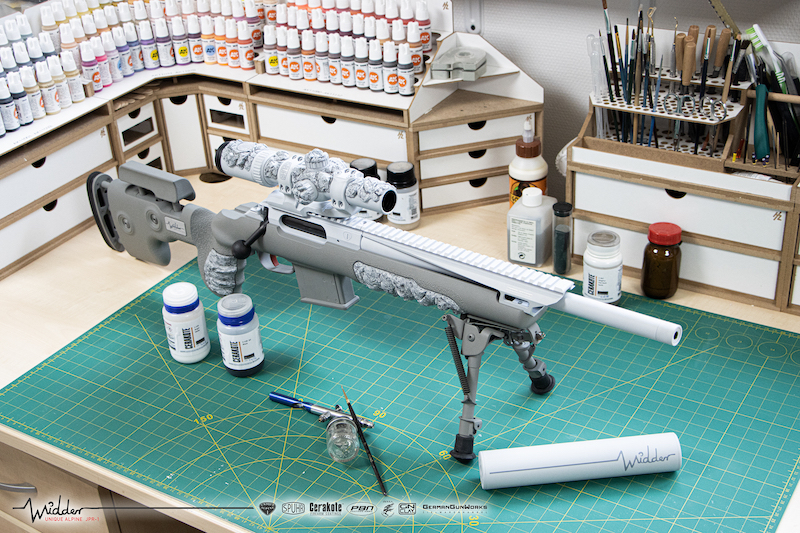
Doing it right also meant that GGW completely disassembled the weapon and blasted all parts with corundum in the correct grain size. Afterwards, any grease residues were chemically and thermally removed to provide an optimal primer.
With Sierra Weapon Coatings, a reliable and high-quality partner was found who applied the base coating to the weapon. Specialized in weapon coating, the small Franconian company did a fantastic job in terms of painting and surface quality of the Cerakote paint.
It may not sound like much, but painting a gas-filled riflescope with the H-series (which is oven-drying) is already an achievement. Choosing too high of an oven temperature can cause effects that are not desirable (a riflescope that shatters), while choosing too low of a temperature will not properly harden the paint and result in inferior properties. So, Sierra Weapon Coatings knows exactly how to do it right.
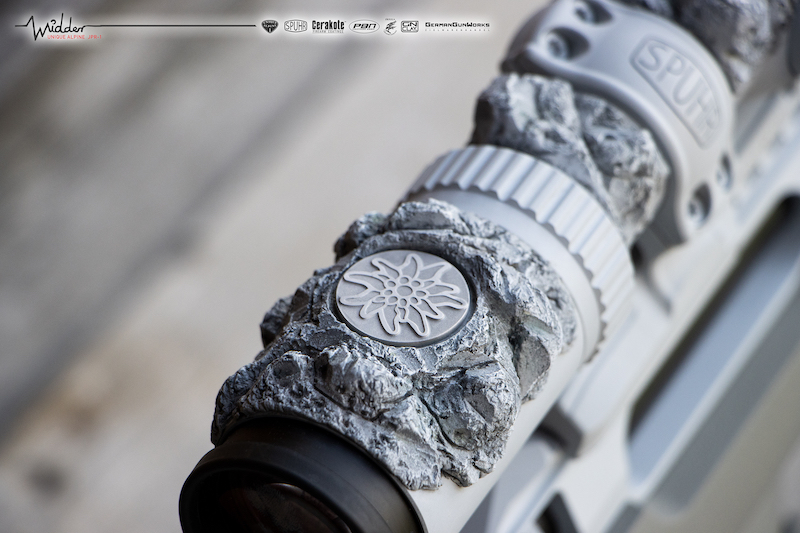
GnClay Modeling
Now let's move on to something completely new - the 3D modeling of the ram!
For millennia, humans have adorned their weapons. In the field of firearms and knives, traditional ornamentation or surface treatments were usually achieved through engraving or repainting. Thus, a change in shape was previously only possible through the removal of material through engraving or milling. This can only be done by authorized persons in Germany (e.g. gunsmiths), is very laborious, and usually requires new proofing for firearms. Moreover, traditional firearm processing methods impose significant limits on shaping. GnClay now bridges this gap by allowing anyone to model shapes and structures.
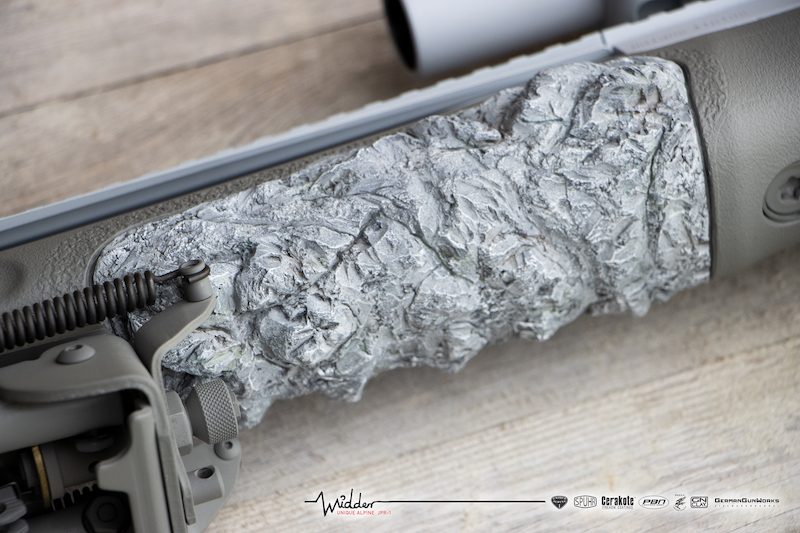
GnClay, or (pronounced Gun Clay), is a two-component modeling compound specially designed for use on firearms. The properties of the compound allow for modeling various structures on different parts of the rifle, either for permanent decoration or camouflage of the weapon. The artisan's skills are hardly limited when working with GnClay, as it can be excellently processed in a stable and detailed manner.
Currently, the GnClay developed by GermanGunWorks is not yet ready for the civilian market, as the processing is still too complex and there is a lack of investors with the necessary capital for mass production and the associated effort. Let's see what the future holds. So, if you are interested in such work on your weapon, you currently have no choice but to have the work done directly at GermanGunWorks.

Civilian Usage:
An innovative development like GnClay will initially polarize, as many innovations in the firearms industry. Weapons used to almost exclusively have wooden stocks, and when plastic stocks emerged in the 1960s, they were initially viewed skeptically. Similarly, weapons were expected to be black or silver. Then, specialized paints for firearms entered the market a few years ago, and today, weapons with various colors, patterns, and coatings are not an uncommon sight. With GnClay, one simply takes the logical step of bringing the previously painted forms from 2D into the 3-dimensional realm. The modeling compound allows for visually appealing shapes and surfaces on one hand and optimal and ergonomic adjustments for cheek rests or grips on the other hand. The possibilities are scarcely limited by imagination.

Official Usage:
Already in the late 1990s, units like the US Navy SEALs experimented with 3D surfaces on their helmets and weapons to improve contours and night vision reflectivity. The result was helmets and weapons that were decorated with acrylic/silicone lines from a cartridge press and coated over. The possibilities were very limited and not optimal. GnClay, on the other hand, is lightweight, durable, malleable, and can be shaped to break up contours significantly. Additionally, it can be overpainted and thus optimize night vision reflectivity significantly, for example with Cerakote ceramic paint. In the field of sniping, the product offers snipers the possibility to permanently shape the weapon with less conspicuous contours. It doesn't matter whether it's realistic reproductions of surfaces (e.g., tree bark, stones, leaves, etc.) or imaginative designs - the malleable material offers virtually limitless possibilities. The benefits of GnClay are not limited to weapons, but can be applied to all "hard" objects. This includes contour-breaking designs on helmets, spotting scopes, tripods, laser markers, rangefinders, etc.
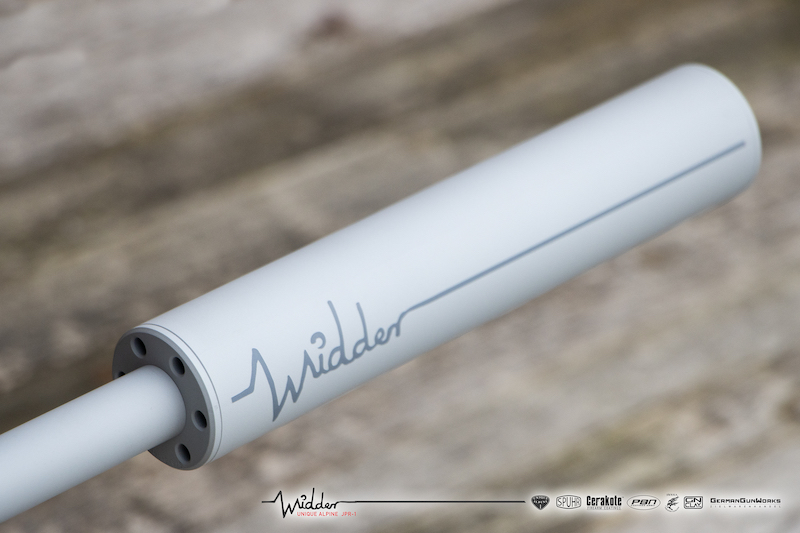
Properties:
The modeling compound is characterized by the following points:
- Two-component modeling compound with a simple 50/50 mixing ratio
- Self-curing (air-drying)
- Shape-stable (does not flow)
- Very hard after curing
- Very detailed modeling possible (consistency of good shape-putty when processed)
- No shrinking or cracking during curing
- Waterproof after curing
- Heat resistant up to 200°C / non-flammable
- Cold-resistant up to -30°C
- Shock-resistant
- Forms a strong adhesive bond / sticks firmly to itself, metal, ceramic, wood, stone, plastic, fiberglass
- Depending on processing and ambient temperature, moldable for up to 3 hours after mixing.
- Cures within 24 hours
- Base material can be colored
- Base materials of different colors can be mixed
- Can be used for molding various substrates
- Available in the colors: White, Black, Gray, Green, Brown
- Resin-based
- Can be easily painted after curing with, for example, Cerakote, Duracoat, or model paints (acrylic or enamel).
- Not subject to firearms regulations, as no machining activity takes place on essential parts such as the housing, therefore no re-testing is necessary.

The Widder Modeling
Unique Alpine… Alps… Rocks and Rams… the motto for the weapon was quickly found. After many months of development and testing of GnClay, there was no longer a question of whether the modeling compound could depict rock elements on the weapon. Rather, it had to be ensured that the post-modeled Alpine massif was also ergonomically compatible with a firearm. It is clear that the functionality of a weapon should never be diminished or impaired by anything.
When modeling, attention was therefore paid to a high level of ergonomics and positive haptics. Even if it may be hard to believe at first glance, the weapon fits excellently and very grippily in the hand - even with prolonged use, there is no discomfort. This was achieved by building the modeled rock elements in such a way that raised elements were modeled between, for example, the fingers, while the modeling compound was lowered for the contact surfaces. This way, the overall structure fits perfectly in both the guiding and shooting hand.
As the GGW originates from the field of film and museum model building, a lot of expertise and tricks were applied in the design. Basic structures were introduced into the still moldable modeling compound with crumpled aluminum foil and coarse-grained sandpaper, stone chips and structural cracks were modeled with dentist tools, etc.
The painting is also an art that should not be underestimated. A total of eight layers of paint were applied using various techniques such as airbrushing, stippling, brushing, washing, and dry brushing to achieve a realistic result. We believe the result speaks for itself.
According to GGW, modeling with painting took a total of 10 hours and about 300g of the innovative GnClay modeling compound was used. If one were to have their own weapon redesigned in this way, it would certainly not be inexpensive, but still within a reasonable range to possess a true unique piece of a completely new kind.
Laser Engravings
The project was also rounded off with small details that GGW incorporated into the project. This includes, for example, a laser-engraved plate on the right side of the stock showing the Ram logo, the laser engraving of the logo on the system housing, or the company logos on the Picatinny extension of the handguard. At 12 o'clock, a small laser-etched Edelweiss adorns the scope, which was incorporated into the modeling to strengthen the reference to the Alps even more.
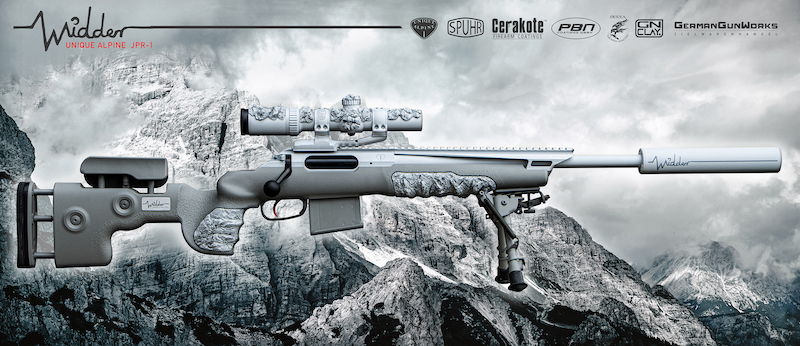
Conclusion
So what is the Widder? An experimental subject? A decorative weapon? A new way of camouflaging service weapons?
Somehow, all of these apply to this new type of weapon treatment and offer a completely new range of possibilities that have yet to be explored. At the same time, it is undisputed here that the foundation, namely the JPR-1 Nordland Scout from Unique Alpine and the components used, already make an excellent weapon.
Overall, this is a project that certainly deviates from the norm and clearly breaks up the monotony of the "same old, same old" somewhere! More of this!
GermanGunWorks on the internet
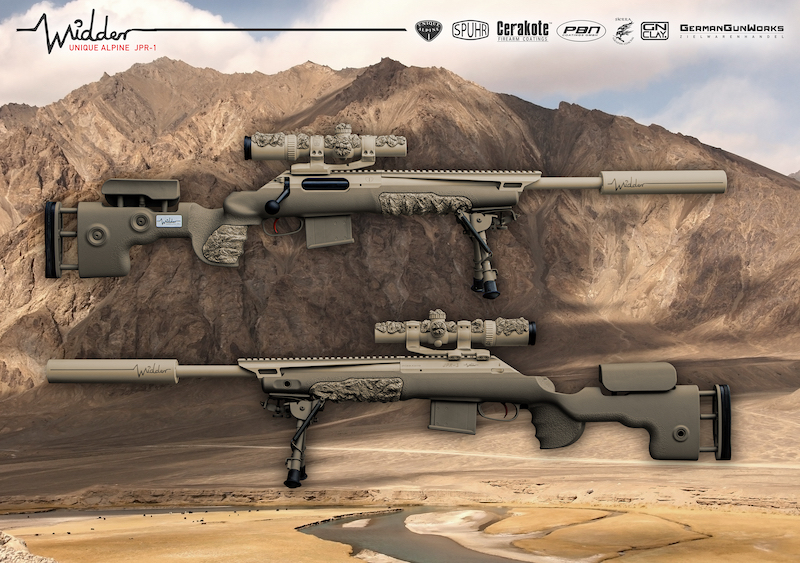
This bighorn sheep only exists digitally: instead of rocks in arid coyote camouflage. Also looks good on ...
SPARTANAT is the online magazine for Military News, Tactical Life, Gear & Reviews.
Send us your news: [email protected]
Ad
similar
Get the weekly SPARTANAT newsletter.
Your bonus: the free E-Book from SPARTANAT.


